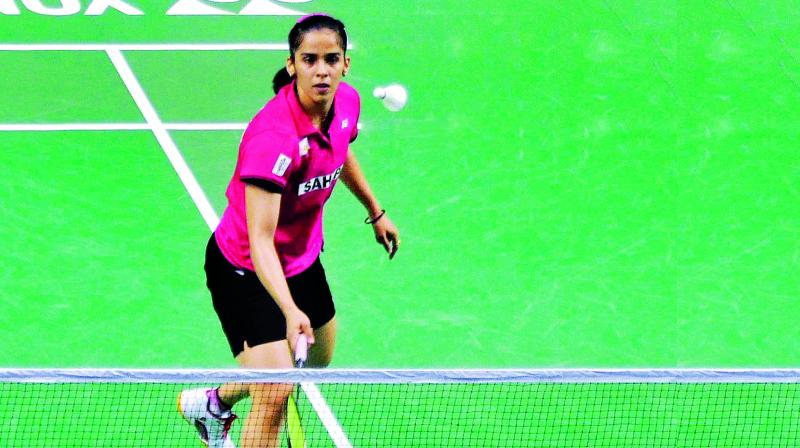Down but not out: How sportstars overcame injury

After Saina Nehwal’s early exit from the Olympics due to her knee injury, she recently made a shocking statement that this could be the end of her career. It surprised many that the champion, who had also been ranked world number one at one point, seemed so discouraged. However, her contemporaries and other sportspersons who have had similar experiences say that it is not the end for Saina.
Badminton player Prannoy H.S. had suffered a setback in his career and rankings too, when he had a severe toe injury. After several months of inactivity, he made a comeback by winning the Swiss Open in March this year.
“Before the injury, I was ranked world number 12, but after recovery when I came back to the court, I had fallen to rank 22. There was nothing I could do about it. I could make the comeback because I’ve learnt to deal with injuries much better now than when I was younger. I used to break down when I had to see my friends go ahead and play the tournaments that I was also supposed to be a part of. But now, I try to look at the brighter side of it. When I am injured I get to go home and stay with my parents,” says Prannoy, who is close to Saina.
He adds, “After her loss at the Olympics because of the injury, she was quite upset, understandably. For almost four years, she has been injury-free and this probably was a big blow to her. She is being too harsh on herself with the statement because I think she definitely has it in her to come back.”
City player B. Sumeeth Reddy made a major compromise when he had to switch from playing singles to playing doubles due to an incurable back problem. Doctors had advised him to discontinue playing, but he made his way through it and is now part of the only doubles team from India that got selected for the Olympics.
“I have air bubbles in my back. It is a degenerative problem. In 2011, I had severe pain and couldn’t walk. There was also a slight chance of paralysis, the doctors said. When I had made it clear to them that I wanted to play, they showed me a way around it. Since my bones are weak, I had to make the muscles around them extra strong. Now, I exercise for three hours daily, just for my back. Mentally, what kept me going was the fact that I didn’t know how much more time I had as a player. So I started playing every match like it could be my last. In fact, that made me more focussed,” he says.
Other sportstars like Sania Mirza and Yuvraj Singh too have battled major injuries and illnesses and have made it back to the top. Many opine that Saina too will do the same.
Badminton player Jwala Gutta says, “As athletes, we don’t know anything other than playing badminton. It becomes difficult to imagine our life without it. But, you need to come to terms with the fact that after a point, there’s not much you can do. However, I don’t think it’s the end for Saina yet. Obviously, she’s feeling low, especially since people are ready to criticise athletes and judge us. She’s done so much for our country and she’s going through pain. We should give her some time and positive vibes, and not be critical about it.”
Dhanraj Pillay, former Indian Hockey Captain too, is confident about Saina’s comeback. He says, “Saina has dedicated her life to this sport and I’m sure she will make a comeback like never before. It’s natural for an athlete to have such thoughts. I had a knee surgery a few months before my 2004 Athens Olympics and went through the same phase, but with proper training and constant practice, I was in the league again. I was 37 years back then but even after the injury, my fitness levels were on par with a 19-year-old. We have had many instances where players like Leander Paes and Sachin Tendulkar have made a stellar comeback right after their injuries. The mind does play games during a weak phase but the only way out is to believe in oneself and practice hard.”
For someone in a team sport, the dynamics are different. Cricketer Pragyan Ojha had received a blow to his head during a match. For his recovery, he thanks his friends and family. “When you’ve suffered an injury, negative thoughts like ‘will I ever be fit to play again’ do crop up. I am thankful that I have a great family who support me. When a cricketer is injured, another player takes his place and if he performs well, he is retained. So, the injured guy has to strive hard to reclaim his position in the team,” he says.
Ayaz Memon, sports author and senior journalist gives an overview of the situation. “In case of a cricketer, the life span is much longer and the chances of a comeback are much better. In case of a badminton player like Saina, it’s doubtful that she will have a career going past 35 or 37, given the intensity of the sport.
It’s unfortunate when a sportsperson is injured and is forced to retire prematurely, and it’s worse when the player is in his prime. An injury is difficult to deal with when you’re a sportsperson and your livelihood depends on the physical fitness.
Thankfully, medicine and science has made dealing with trauma and other injuries easier, making comebacks a smoother affair. On the other hand, because of the advancement of science and the number of tournaments, pressure to deliver has also increased.
— With inputs from Nishtha Kanal and Aarti Bhanushali

